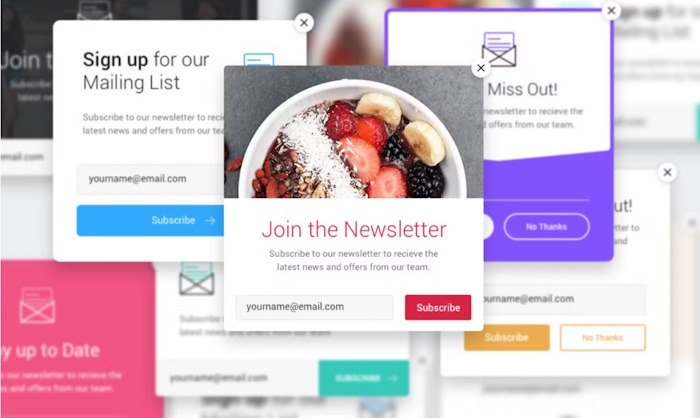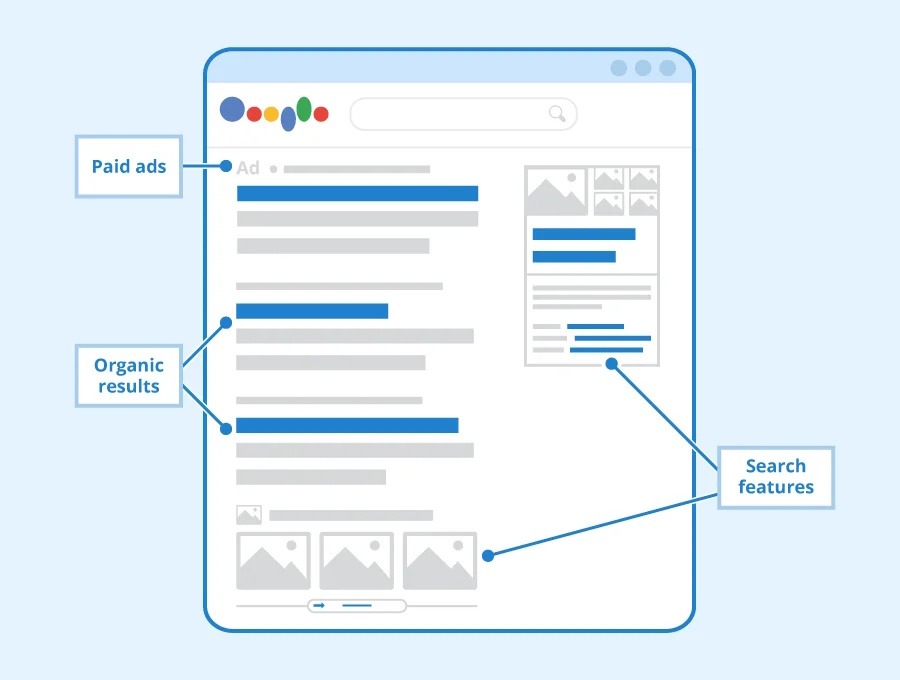It’s hard enough to keep people’s attention these days (even when you’re interesting). Attention spans are getting shorter, and potential customers don’t hesitate to hit that back button when they’re no longer interested in what you’re offering. The high bounce rate most SMBs are experiencing isn’t just a statistic — it’s actual humans saying “thanks but no thanks” to what you’re offering.
As a small business with only so many tricks up your sleeve, what can you do to keep search engines happy while actually converting the humans who visit?
Here are three big website mistakes that are secretly sabotaging your SEO, confusing your customers, and costing you money. Fix these now or watch your competitors zoom ahead while you wonder where all your traffic went.
Issue #1: Complicated Navigation Barriers & Checkout Process
What’s rule number one when you make the sale? Stop talking. The same goes for digital yammers or things that stray from the point when all you want the consumer to do is navigate to the product and check out. Here’s how we often see SMBs get in their own way.
Poor Navigation
Navigating to your website should be the most work a consumer should ever have to do. Navigating through it should be a breeze. Users don’t want to be sent through a maze to find what they need. It it takes them more than two clicks to get to their destination, that’s too many. Here are ways SMBs unintentionally make things more difficult – and lose customers in the process.
- Hidden Search Box Crisis | When the search function for a European online timber webstore was barely visible on desktops, users struggled to locate products they were actively seeking to purchase — an immediate conversion killer that left money on the table.
- Menu Clutter Catastrophe | Zen Windows redesigned their confusing navigation, making it easier for visitors to find what they needed, and saw conversion rates jump from 0.75% to 2.95% – nearly quadrupling their results with navigation changes alone.
- Distraction Disaster | VeggieTales removed their navigation bar entirely during checkout to prevent user distraction, increasing revenue by 14% per visitor – proving that sometimes less navigation means more money.
Landing Page Letdowns
Your landing page is digital real estate that should be working overtime. When potential customers arrive from search engines, they need to immediately understand what you’re offering and why they should care.
A study by Nielsen Norman Group found that visitors spend an average of just 10-20 seconds on a landing page before deciding to stay or leave. That’s barely enough time to microwave a sandwich, let alone convince someone to buy your product.
Effective landing pages that reduce bounce rates load quickly, address the exact problem that brought the visitor there in the first place, and focus on a single clear call-to-action. When outdoor retailer REI simplified their landing pages to focus on one product category per page, they saw a 36% increase in time on site and a dramatic decrease in bounce rate.
Hidden Checkout Obstacles
Surprise! You’re not there yet.
That’s never something you want your customers to hear, especially when they’re reaching for their credit card. Simply by removing a Facebook Login option from their checkout page, one online retailer managed to increase conversion rates by a healthy 3%, translating to $10,000 extra revenue dollars per week.
Another blocker can be unexpected shipping rates. The consumer has already budgeted the cost of the item before purchase; they never agreed to $7.99 in shipping and fees. For some, that could ruin the science of the carefully selected price point, knocking a lot of potential customers out of the running. By moving shipping estimates to earlier in the buyer’s journey, customers are far less likely to “jump cart.”
Lastly, keep things simple. The purchase process can be overwhelming for many, and decision fatigue is a thing. Hitting the customer with a 17-field form right at the end may be a clever way to test their loyalty, but it is a poor way to sink a slam-dunk sale.
Also, most buys are based on emotion. Ticking someone off with a test of patience (or endurance) is a great way to get them out of the mood.
Issue #2: Trust and Credibility Gaps
It’s no secret that buyers are drawn to authority figures. And, that they buy from people they “know, like, and trust.” When websites are the primary interaction many of your customers will have with your brand, never miss an opportunity to show them just how authoritative and credible you are.
Users are critically analyzing your website from the moment they arrive, looking for two things: proof that your website is legitimate and trustworthy, and proof that it isn’t. Without major brand recognition, you need to establish trust quickly through other means.

Social proof can be a powerful thing. This means that people like to do what others are doing or that they trust the advice of their (credible) peers when making decisions. For instance, when women’s apparel company FigLeaves added product reviews to their site, customers suddenly became 35% more likely to make a purchase.
Third-party validation tells users your website is secure. Displaying trust badges and connecting to recognized social media platforms shows visitors you have nothing to hide and helps build immediate trust. And speaking of trust, when cloud hosting service Hawk Host replaced a simple icon of a globe with an icon of a padlock, conversion similarly increased by 2-3 times. There’s no denying it; people want to see that you know what you’re doing (and that others think so, too).
Search engines have caught on too — they prioritize websites that demonstrate experience, expertise, authoritativeness, and trustworthiness (E-E-A-T). Adding credentials, case studies, and transparent business information isn’t just good for potential customers; it’s critical for your visibility in search results.
Issue #3: Poor Site Performance and Technical Issues
At the end of the day, your product may be the best on earth, but if your interface is lacking – or your site is just annoying to use – buyers won’t care. Here are some of the top issues that can hinder SMB website performance.
Slow Loading Times
Today’s visitors are impatient. Slow loading times directly result in frustration, abandonment, and decreased conversion rates. In fact, almost 90% of website visitors will give up and never return to a site with sub-par user experience.
Remember just how annoying that Netflix buffering screen can be? According to Google, 53% of mobile users abandon sites that take longer than three seconds to load. That’s not even enough time to decide what you want in your coffee, yet potential customers have already decided your website isn’t worth the wait. Search engines notice this high bounce rate too, and your rankings suffer as a result.

A recent study by Portent found that web pages loading in 1 second had conversion rates nearly 3x higher than pages loading in 5 seconds. For website owners, every millisecond counts — literally. Each additional second of load time can reduce conversions by up to 7%. When your competitors’ sites are zipping along while yours crawls, guess where the sales are going?
Poor design decisions often contribute to these performance issues. Heavy images without proper optimization, unnecessary plugins, and bloated code are common culprits. We’ve seen clients shave 4-5 seconds off their load times simply by compressing images and removing redundant scripts, resulting in immediate conversion rate improvements.
Mobile Optimization Failures
Speaking of user experience, most people are on mobile these days. According to Statista, in Q4 2024 over 75% of US retail sales happened on mobile, accounting for roughly two-thirds of online orders. This makes sense, considering mobile-optimized sites convert more than 100% higher than non-optimized sites. For instance, trucking certification company TruckersReport discovered that over 50% of their traffic came from mobile devices. However, because their website wasn’t mobile optimized, they were losing out on significant revenue.
When users have to pinch in, zoom out, or scroll back and forth to see your site on their smartphone, you know it’s not optimized. Meeting users where they are and providing simple, usable screens improves navigation, reduces stress and frustration, and streamlines the path from landing to purchase.
The Hidden Cost of Poor User Experience
Let’s be brutally honest — your web pages might be sabotaging your business without you realizing it. Poor user experience isn’t just an aesthetic issue; it’s a conversion rate killer. Website owners frequently overlook how seemingly minor annoyances compound into major frustrations for visitors.
Take pop-ups, for example. While they can boost email sign-ups when used judiciously, bombarding visitors with multiple overlays within seconds of arrival sends them running. Our analysis found that sites using more than two pop-ups on mobile devices saw bounce rates increase by up to 25%. That’s a quarter of your potential customers saying “nope” before they even see what you’re selling.

Poor design choices extend beyond aesthetics to fundamental usability. Confusing information architecture, inconsistent button placement, and complicated form fields are silent conversion killers. When visitors can’t intuitively navigate your site, they don’t blame themselves — they blame you, and then they leave.
One client came to us puzzled by their 0.8% conversion rate despite strong traffic numbers. Our audit revealed their product pages lacked clear pricing, buried the “add to cart” button below the fold, and used tiny, hard-to-read fonts. After implementing our recommended changes, their conversion rate jumped to 3.2% within 30 days — a 300% improvement without changing their products or prices.
Need Professional Help? Our SEO Consultants Can Help
The point of this article was not to call your baby ugly. It was to call attention to some rookie mistakes that some SMBs (and organizations in general) make when selling their goods online. So much attention is put toward content, images, and the “big stuff” — and for good reason. However, these three areas: complicated checkout, trust gaps, and poor site performance, are often overlooked and can be the stuff that sinks ships.
If you’re looking to patch any holes in your leaky website, hiring affordable SEO consultants may be the right next step for your small business. It’s one thing to identify weaknesses, but another entirely to know how to execute a comprehensive SEO plan that will repair them (and keep them fixed).
Ready to hire out? Get SEO done for you.
The OAG offers affordable SEO consulting for SMBs. Whether you’re seeking advanced SEO strategies or merely looking to increase conversions on a particular page, we can help. We know what you don’t know and have countless hours of experience improving sites just like yours. Let us help you audit your SMB website, top to bottom, and get rid of the leaks that are costing you sales.
To get started, chat with us today.








